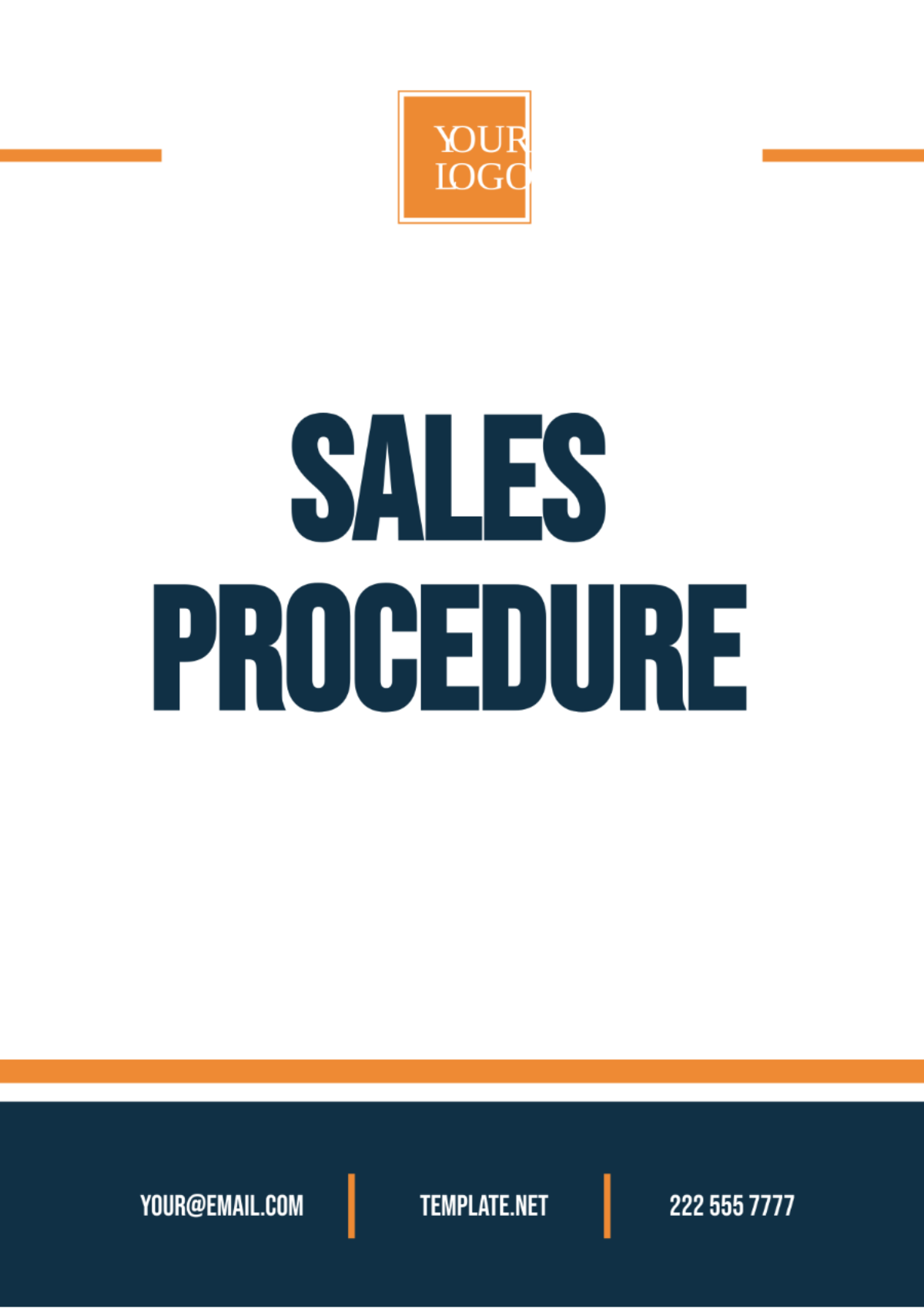Sales Procedure
Introduction:
This Sales Procedure Template outlines the systematic approach to be followed by sales representatives of [YOUR COMPANY NAME] in their sales activities. It aims to provide a structured framework for achieving sales targets, fostering customer relationships, and maximizing revenue generation.
Scope:
This procedure encompasses the entire sales process, from prospecting and lead generation to closing deals and post-sale follow-up. It applies to all sales personnel within the Sales Department of [YOUR COMPANY NAME]
Purpose:
The purpose of this procedure is to ensure consistency, efficiency, and professionalism in sales operations. By following this template, sales representatives can streamline their activities, enhance customer satisfaction, and drive business growth.
I. Prospecting and Lead Generation
Identify Target Market: Define the target market segments based on demographics, geography, industry, or other relevant criteria.
Generate Leads: Utilize various lead generation methods such as cold calling, email outreach, networking events, and social media engagement.
II. Qualification and Needs Assessment
Qualify Leads: Assess the suitability of leads based on their fit with the company's products or services and their potential to convert into customers.
Determine the prospect's level of interest, budget, decision-making authority, and purchasing timeline.
Conduct Needs Analysis: Engage with qualified leads to understand their specific needs, challenges, and pain points.
III. Presentation and Proposal
Customize Solution: Develop customized solutions or proposals that address the prospect's identified needs and offer value-added benefits.
Deliver Presentation: Present the solution to the prospect in a clear, concise, and compelling manner, emphasizing how it addresses their specific needs and delivers value.
IV. Negotiation and Closing
Negotiate Terms: Engage in negotiation discussions with the prospect to finalize pricing, terms, and conditions.
Close the Sale: Secure commitment from the prospect to move forward with the proposed solution and finalize the sales agreement.
V. Post-Sale Follow-Up
Ensure Customer Satisfaction: Follow up with customers after the sale to ensure their satisfaction with the product or service.
Seek Referrals and Upsell Opportunities: Ask satisfied customers for referrals and explore opportunities to upsell or cross-sell additional products or services.
Additional Reminders and Tips:
Maintain a customer-centric approach by focusing on building relationships and providing solutions that meet the customer's needs.
Follow up promptly with leads and prospects to keep the sales process moving forward and address any outstanding questions or concerns.
Continuously update and refine sales techniques based on feedback, market insights, and industry best practices.
Prepared By | Company Name | Department | Date |
|---|
[YOUR NAME] | [YOUR COMPANY NAME] | [YOUR DEPARTMENT] | [DATE] |
Procedure Templates @ Template.net






























